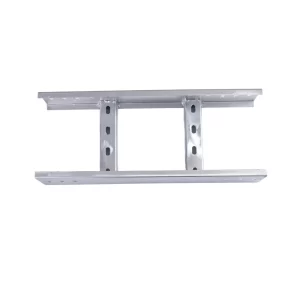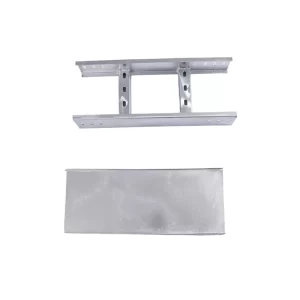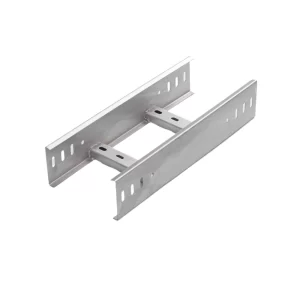Cable trays, particularly ladder cable trays, have become indispensable components in modern electrical installations, data centers, industrial plants, and commercial buildings. They serve as a robust framework for organizing and protecting cables, wires, and conduits. This article delves into the applications, advantages, and design considerations of ladder cable trays, highlighting their critical role in various industries.

Understanding Ladder Cable Trays
A ladder cable tray is characterized by its open design, resembling a ladder with rungs spaced at regular intervals. It consists of two parallel side rails connected by multiple cross members or rungs. This structure not only provides ample space for cable management but also allows for easy access and maintenance. The open design facilitates air circulation, reducing the risk of overheating and fire hazards associated with enclosed cable management systems.
Applications of Ladder Cable Trays
1. Industrial Facilities: In manufacturing plants, ladder cable trays are widely used due to their durability and ability to handle heavy loads. They can support large volumes of cables required for power distribution, control systems, and communication networks. The open design ensures easy inspection and maintenance, crucial in environments where downtime can be costly.
2. Data Centers: The high density of cables in data centers necessitates an efficient cable management system. Ladder cable trays provide the necessary flexibility to accommodate new cabling as infrastructure expands. Their open design minimizes the risk of cable damage from overheating, ensuring optimal performance of servers and network equipment.
3. Commercial Buildings: In office buildings, retail spaces, and educational institutions, ladder cable trays offer a neat and organized way to manage electrical and communication cables. They are particularly useful in areas with high foot traffic, where cables need to be accessible yet protected from physical damage.
4. Transportation Infrastructure: Airports, railway stations, and subway systems rely on ladder cable trays to manage complex cabling systems for lighting, security, and operational controls. The robust construction of ladder trays ensures reliability in harsh environmental conditions.
5. Power Generation and Distribution: In power plants and substations, ladder cable trays are essential for managing high-voltage cables and providing a safe path for electricity transmission. They are designed to withstand extreme temperatures and resist corrosion, making them ideal for such critical applications.

Advantages of Using Ladder Cable Trays
1. Cost-Effectiveness: Compared to conduit systems, ladder cable trays require less material and installation time, leading to significant cost savings. Their modular design allows for easy expansion and modification without major disruptions.
2. Ease of Installation and Maintenance: The open structure of ladder cable trays makes it straightforward to add, remove, or modify cables. This feature is particularly advantageous in dynamic environments where changes are frequent.
3. Improved Safety: By providing a structured pathway for cables, ladder cable trays reduce the risk of tripping hazards and electrical accidents. The open design also enhances fire safety by allowing heat dissipation and minimizing the spread of flames.
4. Enhanced Cable Performance: Proper cable management through ladder trays ensures that cables are not bent beyond their minimum bend radius, preventing damage and improving signal integrity. This is especially important in data centers where cable performance directly impacts network efficiency.

Design Considerations
When selecting and designing a ladder cable tray system, several factors should be considered:
1. Load Capacity: The weight of the cables and any additional loads (such as personnel during maintenance) must be within the tray’s load-bearing capacity.
2. Corrosion Resistance: In environments prone to moisture or corrosive agents, choosing materials like stainless steel or galvanized steel is crucial to ensure longevity.
3. Fire Retardancy: For applications in areas with high fire risks, using fire-retardant coatings or materials can significantly enhance safety.
4. Aesthetics and Accessibility: In visible areas, the choice of materials and finishes can impact the overall appearance of the building. Accessibility for maintenance and future upgrades should also be considered.
Ladder cable trays offer a versatile solution for cable management across various industries. Their strength, adaptability, and ease of maintenance make them a preferred choice for both new installations and retrofit projects. As technology evolves and demands for efficient cable management increase, ladder cable trays will continue to play a pivotal role in ensuring the safety, functionality, and aesthetics of electrical and data infrastructures.

